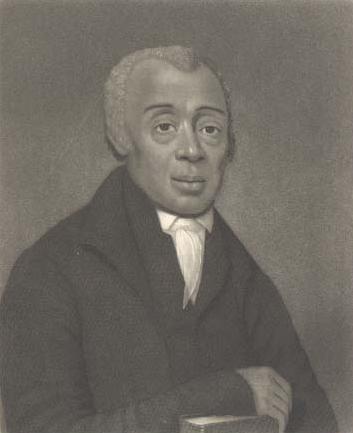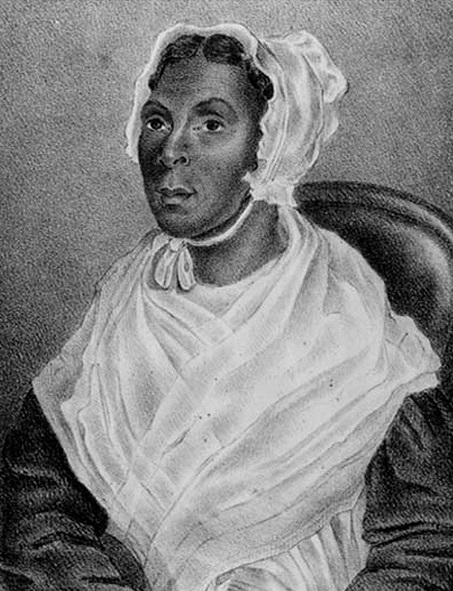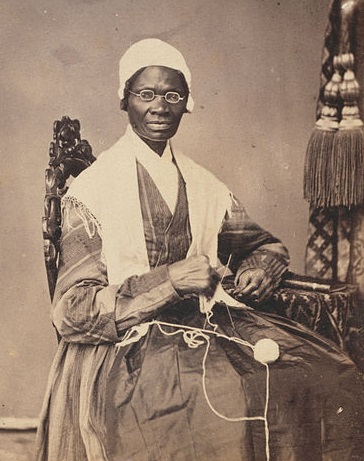Yesterday, I posted Part 1 of my series profiling ten African-American Methodists who led the fight for racial equality in America. There I offered a list of four African-American Methodists active during the civil rights movement. Today, in Part 2, I present six leaders who opposed slavery.
I noted yesterday that commemorating these Christian activists is so important as we close out Black History Month. It’s critical that we recall the integral role the Church played in promoting racial equality throughout American history. These individual Christians – who lived out their public witness in the tradition of John Wesley – should encourage Christians today to demonstrate their faith in the public square and change society.
So, in honor of Black History Month, here are six African-American Methodists who worked tirelessly to end slavery in America:

Richard Allen (1760-1831) founded the African Methodist Episcopal (AME) Church in 1816. It was the first African-American denomination in the United States. Born as a slave in Philadelphia, Pennsylvania, Allen’s family was sold to a farmer in Delaware when he was a child. Allen converted to Methodism after hearing an itinerant preacher when he was 17-years-old; and at 23-years-old, he bought his freedom for $2,000.
Allen preached at a service on Sundays at 5 am for African Americans at St. George’s Methodist Episcopal Church in Philadelphia after gaining his freedom. But because of segregation and limitations on his ministry, he left St. George’s to found the AME Church. This denomination, due to the determined work of local congregations and individual members, has propelled the fight for racial justice in America ever since its founding.
Allen himself set forth this vision, and many early members of the denomination were directly inspired by him. He expressed his strong biblically-grounded opposition to slavery, informed by his firsthand experiences. Allen related these views in the autobiographical account of his life and ministry:
“I do not wish to make you angry, but excite attention to consider how hateful slavery is, in the sight of that God who hath destroyed kings and princes, for their oppression of the poor slaves. … Men must be wilfully (sic) blind, and extremely partial, that cannot see the contrary effects of liberty and slavery upon the mind of man…”

Jarena Lee (1783-1855) became the first woman authorized to preach in the AME Church. Lee had sought Allen’s approval to preach, but was initially refused. However, Lee recounted in her autobiography how that changed after one particular Sunday. She wrote that she “sprang, as by altogether supernatural impulse, to my feet” during the sermon and preached from the text that morning. Lee said that Allen “rose up in the assembly,” and instead of reprimanding her, said he “believed that [Lee] was called to that work, as any of the preachers present.”
Lee became a prolific itinerant preacher. In one year, she wrote she “travelled (sic) two thousand three hundred and twenty-five miles, and preached one hundred and seventy-eight sermons.” She also “travelled 721 miles, and preached 692 sermons” in 1835.
During these extensive journeys, Lee collaborated with many former slaves and anti-slavery advocates. She repeatedly condemned slavery in her autobiography, describing it as “that wretched system that eminated (sic) from the bottomless pit” and “one of the greatest curses to any Nation.”

Sojourner Truth (1797-1883) was a former slave, turned outspoken advocate for abolition. Originally named Isabella Baumfree, she changed her name to Sojourner Truth after converting to Methodism in 1843. She was a member of the Mother African Methodist Episcopal Zion Church in New York City, the founding congregation in the AME Zion Church and the same local church that Frederick Douglass and Harriet Tubman attended. Truth soon became a widely-known itinerant preacher and lecturer.
“Her faith and preaching brought her into contact with abolitionists and women’s rights crusaders, and Truth became a powerful speaker on both subjects,” PBS noted in its This Far by Faith series. The United Methodist Church affirmed that Truth combined “her religious faith with her experiences as a slave” in her many speeches.
The Sojourner Center has commemorated the legacy of Sojourner Truth, the victim of abuse as a slave, by providing care and shelter for female victims of domestic violence since 1977.

Frederick Douglass (1818-1895) was born into slavery, but escaped in 1938. Among America’s most famous abolitionists, Douglass became Methodist while still a slave. He served as licensed preacher in the AME Zion Church after his escape. In addition to teaching, Douglass held “other offices in the AME Zion Church, like steward, Sunday school superintendent, sexton,” retired AME Zion Church historian Rev. James David Armstrong told Adelle Banks from Religion News Service (RNS).
Douglass didn’t limit his activism to the secular realm. He also challenged the Church to reform its social witness when it came to slavery and racism.
“I love the pure, peaceable, and impartial Christianity of Christ,” Douglass wrote in his autobiography, Narrative of the Life of Frederick Douglass, an American Slave. “I therefore hate the corrupt, slaveholding, women-whipping, cradle-plundering, partial and hypocritical Christianity of this land.”

Julia A. J. Foote (1823-1900) grew up in New York State, the daughter of two former slaves. Her parents joined the Methodist Episcopal Church. Coming to salvation in this denomination at 15-years-old, Foote sensed a growing calling on her life to become an evangelist. After overcoming her fears, then opposition from her husband and church leaders, Foote successfully pursued this calling. She became the “first woman to be ordained a deacon and the second woman to hold the office of elder” in the AME Zion Church, according to the African American Registry, a non-profit educational organization.
In the introduction of her autobiography, A Brand Plucked from the Fire, publisher Thomas K. Doty observed the barriers Foote needed to overcome as an African-American woman in order to minister to so many thousands of people. He attributed her success to being “simply strong in common sense, and strong in the Lord.”
Foote used her platform to encourage the Church toward racial reconciliation. “Holiness takes the prejudice of color out of both the white and the black,” she wrote in her autobiography. She also engaged in activism beyond racial issues. The Registry noted that it was “the subordination of women, especially in the spiritual realm, and her desire to inspire faith in her Christian sisters that endow her story with its distinctive voice and intensity.”

Harriet Tubman (1822-1913) remains perhaps America’s most iconic opponent of slavery. In March 2013, President Barack Obama established the Harriet Tubman Underground Railroad National Monument in Dorchester County, Maryland. His proclamation elaborated on just a few of her heroic roles in life: escaped slave, Underground Railroad “conductor,” abolitionist, and Union scout, nurse, and spy during the Civil War.
Although she engaged in dangerous anti-slavery work, Tubman expressed a deep and abiding trust in God for her safety. She famously asserted: “I always tole God, ‘I’m gwine [going] to hole stiddy on you, an’ you’ve got to see me through.”
This God-centered confidence was a characteristic she developed since her childhood, according to historian C. Peter Ripley in The Black Abolitionist Papers. “Laboring as a field slave through her teenage years, she developed the muscular build, physical endurance, and deep religious faith that became her trademarks,” Ripley wrote.
As noted already, Tubman attended the same AME Zion congregation in New York City as Sojourner Truth and Frederick Douglass. So closely were Tubman and her legacy associated with the denomination, the AME Zion Church “has been the steadfast guardian of the Harriet Tubman Home and the sacred grounds upon which it stands” for more than a century.
No comments yet




